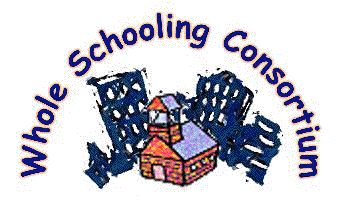

Effective schools that serve truly diverse students in authentic and democratic learning must work together to build a community and provide mutual support within the classroom and school. When students engage in behaviors that are challenging, staff understand that these are expressions of underlying needs of students and seek to help students find positive ways to meet their needs.Links. Publications.

CREATING A CARING COMMUNITY:
Meeting the social and emotional needs of students to provide the critical foundation for learning.
In too many schools, in both low income urban areas and high income suburbs, schools become places of competition, social sorting and ranking. Some schools actually institutionalize such dynamics by listing test scores in rank order of all students in the school. The growth of “zero tolerance” policies, particularly in low income urban schools is contributing to this dynamic. In an effort to create safe schools, such policies are becoming methods of expressing intolerance to and lack of concern with students who demonstrate behavioral challenges. Such school cultures minimize attention to helping students learn skills to deal with internal feelings of anger and hurt and interpersonal conflict (Ayers, Dohrn & Ayers, 2001; Lantieri & Patti, 1996).). Brain-based research makes it clear that such settings create conditions in which the brain “down-shifts” into fight or flight, making learning difficult if not impossible (Caine & Caine, 1991).
What is needed instead is a school-wide focus on building a sense of community and care, using multiple strategies to assist students in providing help to one another and using positive behavioral support strategies, based on an ongoing commitment to challenging students, when difficulties occur. In his testimony to Congress, Sugai (2002) listed a number of basic features of systematic support for ensuring appropriate behavior in schools. Two of these were integration of academic and behavioral support for all students.
The application of evidence based behavioral practices and systems promotes academic engagement and achievement, and the use of empirically supported instructional practices and systems promotes displays of prosocial student behavior and creates safe classroom and school settings.
All students in a school should have access to positive, preventive, structured, and on-going opportunities to learn, practice, and be acknowledged for displays of prosocial school-wide and individual ocial skills (p. 7).
If schools are to work for all, students must receive instruction and support in social, emotional, and behavioral learning to support academic growth. For such individual learning to occur, a community of learners in the truest sense is necessary to provide a context and environment in which such learning is part of the day to day, minute to minute experience.
Brain research has clearly documented the importance for learning of a sense of emotional safety and support. As Caine and Caine (1991) state, for effective learning to occur students must experience a “relaxed state of altertness”. Altertness is promoting by instruction that is engaging and at the level of the learner while a “relaxed state” occurs when a student feels a sense of belonging in the group, caring by the teacher, acceptance by other students, and a lack of anger, tension, competition, or humiliation. Numerous concrete strategies have been documented that have shown substantial impact on a sense of community in the classroom and subsequent impacts on learning (Sergiovanni, 1994; Peterson, 1992; Thousand, Villa and Nevin, 1994). In a classroom and school that systemically builds a community of learners many behavioral problems are prevented. However, many students with high needs continue to challenge teachers. Positive behavioral support strategies have been proven valuable in helping such students develop alternative means for having their needs met (Lantieri & Patti, 1996; Sugai, 2002). Therefore, building community in the school is critical. This involves many dimensions:
In such a school, ‘behavior problems’ are much less frequent. Children feel cared for, have choices., do not feel constrained, and yet are intentionally taught responsibility in the process. However, given the problems children have in their lives, students will still cause problems and staff seek to respect children and develop proactive solutions.
Rather than viewing children as needing to be ‘controlled’, teachers understand that all behavior communicates a message. When a child ‘acts out’, this is his or her way of telling staff about something they need. The challenge is to help figure out what that need is and to help them learn alternative strategies for meeting it. Glasser described five needs of human beings that can provide a way to understand children: (1) survival, (2) love and belonging, (3) power, (4) fun, (5) freedom. Most often, schools ignore many of these needs and actually create behavior problems in their attempt to thwart children having these needs met. The goal in an inclusive school is to create a school culture and specific strategies that help students meet their needs in positive ways. But what do staff in an inclusive school DO? Here are some simple but powerful steps.
Step 1: Clarify the behavior that is a problem. It’s also helpful to figure out why the behavior is considered a problem. Are rules too rigid? Are children treated poorly so that they are responding in kind? What can be done to help meet Glasser’s Five Needs?
Step 2. Why is the behavior occurring? What need does the behavior signal? These are the questions underlying a good ‘functional assessment’. They are critical for only by answering them do we understand the child and develop a way to meet needs. Other parts of this may involve analysis of the following questions: What occurs before, during, and after the problematic behavior? What is going on in the child’s life?
Step 3. Develop strategies to meet the needs of the child in more positive ways. Develop these ideas with the child. Help the child to understand that the behavior is not good, we understand and care, but there are other ways he can get what he needs. Develop an action plan, do it, evaluate it.
Step 4. Evaluate
how well the change worked. How do we know? Traditionally, we know an intervention
worked
if
the problematic
behavior went
away. In this case,
the strategies only worked if the needs of the
child
were met. Who determines this? The child.
School staff can do other things to deal with problematic
behavior in a positive way.
Some of these include: dialogue and joint planning with the parents; create a room where the child can go, under supervision, when he ‘needs a break’ to deal with emotional stress. This can be the library, a support room, a secluded place in the class (like under the teacher’s desk); build social support for the child. Get a circle of support together of classmates who together plan with the child and teacher, using MAPS for example, how to help him or her; conduct a “Meeting Needs Audit” of the total school to determine how well the school is meeting the five needs identified by Glasser for children in the building. Develop a range of activities that may address discrepancies.
Michael Peterson, 2005
Albin, R.W., Horner, R.H., & O'Neill, R.E. (1994). Proactive behavioral support: Structuring and assessing environments. Eugene, Oregon: Research and Training Center on Positive Behavioral Support.
Breggin, P. (2000). Reclaiming our children : The healing solution for a nation in crisis. Cambridge, Massachusetts: Perseus Publishing.
Developmental Studies Center. (1994). At home in our schools: A guide to school-wide activities that build community. Oakland, California: Author.
Gibbs, J. (1998). Guiding your school community to live a culture of care and learning: The process is called Tribes. Sausalito, California: Centersource Systems.
Gray, C. (1994). The social story kit. Austin, Texas: Future Horizons Inc.
Glasser, W. (1992). The quality school: Managing students without coercion. New York: Harper Perennial.
Janney, R. & Snell, M. (2000).Behavioral support: Teacher's guides to inclusive practices. Paul H. Brookes.
Koegel, L.K., Koegel, R.L., & Dunlap, G. (1996). Positive behavioral support: Including people with difficult behavior in the community. Baltimore, MD: Paul H. Brookes.
Kohn, A. (1992). No contest: The case against competition: Why we lose in our race to win. New York: Houghton Mifflin.
Kohn, A. (1993). Punished by rewards: The trouble with gold stars, incentive plans, A's, praise, and other bribes. Boston: Houghton Mifflin.
Kohn, A. (1996a). Beyond discipline: From compliance to community. Alexandria, Virginia: Association for Supervision and Curriculum Development (ASCD).
Lantieri, L. & Patti, J. (1996). Waging peace in our schools. Boston: Beacon Press.
Lovett, H. (1996). Learning to listen: Positive approaches and people with difficult behavior. Baltimore, MD: Paul H. Brookes.
Noddings, N. (1992). The challenge to care in schools: An alternative approach to education. New York: Teacher's College Press.
O'Brien, J. & O'Brien, C. (1996). Members of each other: Building community in company with people with developmental disabilities. Toronto, Canada: Inclusion Press.
Peterson, R. (1992). Life in a crowded place: Making a learning community. Portsmouth, New Hampshire: Heinemann.
Sapon-Shevin, M. (1999). Because we can change the world: A practical guide to building cooperative, inclusive classroom communities. Boston: Allyn and Bacon.
Sergiovanni, T. (1994). Building community in our schools. San Francisco: Jossey-Bass Publishers.